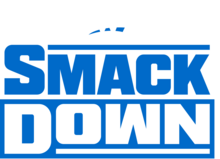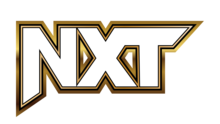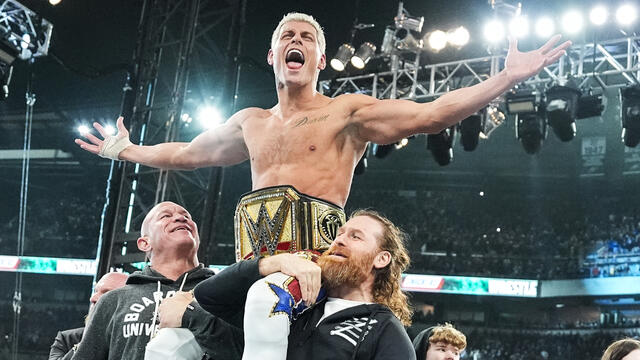
The indie influence: How one small wrestling company impacted WWE
In fall 2005, 600 fans packed into a small rec center in Suffolk County just three miles north of the Long Island Expressway to watch a wrestling show presented by a company called Ring of Honor. In one of the night’s main events, a fearless 5-foot-8 grappler defeated a hard-nosed southerner for the ROH World Championship after more than 30 minutes of grueling action. Those two men? Daniel Bryan and Jamie Noble. Today, they are two of the most integral individuals in WWE. Bryan is one of the company’s biggest stars and Noble has become a key producer and locker room mentor.
For a company that most recognize from the climactic scene in the Oscar-nominated “The Wrestler,” Ring of Honor has developed a hardcore fanbase by cultivating a unique mat style and impressive in-ring talent. Bryan and Noble aren’t the only two competitors to come from the scrappy Pennsylvania-based organization. Since ROH’s inception in 2002, several of its stars have found their way to the WWE roster. Most have won major championship gold, and others are waiting in the wings down in Florida at NXT. Even one of NXT’s top trainers, Sara Amato, was a major star in Ring of Honor.
Over the past 10 years, as more and more Ring of Honor alumni have found their way to the broad spotlight of Raw and SmackDown, there has been a noticeable shift in the wrestling style and type of stars that have risen to the top of WWE. But how did one company that never even aired on basic cable change sports-entertainment? WWE.com spoke with many of the men responsible to find out.
See rare photos of WWE Superstars competing in Ring of Honor
Watch Ring of Honor alumni competing against each other in WWE
The Players:
- DANIEL BRYAN – The two-time WWE Champion became known as one of the greatest wrestlers in the world during his time in Ring of Honor and was one of ROH’s longest-reigning World Champions.
- ANTONIO CESARO – Before becoming a Real American, Cesaro was the “Very European” member of the two-time Ring of Honor Tag Team Champions The Kings of Wrestling, one of ROH’s hottest tandems.
- SETH ROLLINS – The Shield wasn’t Rollins’ first stable. He joined Ring of Honor in 2007 as a member of The Age of Fall, won the Tag Team Championships twice and held the World Title for seven months just before arriving in WWE.
- COLT CABANA – The podcast host and ring funnyman had two stints as one of Ring of Honor’s biggest stars, before and after a cup of coffee in WWE.
- GABE SAPOLSKY – Paul Heyman’s protégé co-founded Ring of Honor soon after the closing of ECW and remained one of its lead producers through much of the following decade.
WWE.COM: How did Ring of Honor start?
GABE SAPOLSKY: I was with a video company at the time that was part of ECW. When ECW went out of business, it left a void for that video company. Basically, we decided we could fill that void ourselves by starting our own promotion. I was very fortunate to have been a protégé of Paul Heyman’s in ECW, so I learned a lot from him. Paul was extremely unselfish at being a mentor and he still is to this day. His lessons were about presenting wrestlers, showcasing their strengths, hiding their weakness, telling a story and the best way to involve the fans in your product and earn their loyalty to your brand. And I was able to take that knowledge and use that to start Ring of Honor.
SETH ROLLINS: When Ring of Honor first started, I was a teenager. The Internet had just kind of blown up as far as online videos and stuff like that. They were my first exposure to indie wrestling and I fell in love with the athleticism. There were guys like Daniel Bryan, Low Ki, AJ Styles, The Amazing Red, these were guys who were doing stuff I had never seen anywhere in professional wrestling. It was blowing my mind.
WWE.COM: Were you trying to recreate ECW with Ring of Honor, or was it going to be its own thing?
ROLLINS: There were so many similarities. It was the same sort of vibe, clamoring for something new. But the cool thing about it was Gabe went in the complete opposite direction. ECW was blood and guts and craziness, but Ring of Honor was pure wrestling, respect, athleticism and a code of honor — and the fans were just as passionate about it. A spiritual successor to ECW is a perfect way to put it, because it had that same underground, guttural vibe to it that ECW did when it first started.
COLT CABANA: I don’t think the style was the same, but the idea that wrestling fans wanted an alternative was the same. This was the best product available to give as an alternative to WWE.
WWE.COM: How did you end up in Ring of Honor?
ROLLINS: I sought out their training facility and moved out to Pennsylvania, but I had no idea how much money I needed to live out there on my own [laughs]. I was like, “Oh jeez, I’m 18 and I don’t know what I’m doing.” So I had to go home. I just couldn’t do it. I did the tryout class and I passed. It was a grueling two-hour workout that I was put us through – hundreds of squats, sprints and mile-runs. They were trying to get us to puke and quit. It was pretty brutal. I remember it was the week of Sept. 11, 2004, and it was so hot. I thought I was going to die, but I got through it. [The trainer] said we had a lot of potential so that got me all fired up.
ANTONIO CESARO: I had a show with a friend, and they had one of those do-or-die tryouts in New Jersey. I died, but I did well. I was brought back and competed against Nigel McGuiness in my first real ROH match and against Alex Shelley in my second. Then I was just kind of wrestling in Ring of Honor mostly for the ROH Pure Title against Nigel. When Chris Hero came in during the [Combat Zone Wrestling]-ROH feud, I turned on ROH and joined CZW. It was the first run of The Kings of Wrestling.
ROLLINS: I had done MTV’s Wrestling Society X with Jimmy Jacobs. He told Ring of Honor founder Gabe Sapolsky about me and Gabe brought me to the Ring of Honor sister company in Florida [Full Impact Pro]. I wrestled Jay Briscoe in a singles match and Gabe took me outside and he said, “I love ya and I want to bring you in to Ring of Honor, so I want to offer you a three-year deal.” I was 21-years-old and as soon as he left I did the air-fist pump. I was just psyched out of my mind.
WWE.COM: How would you describe the in-ring style of Ring of Honor?
ROLLINS: It was this crazy hybrid of styles — American strong style with a little bit of lucha influence, and this crazy athleticism you just don’t see anywhere else.
CABANA: Early ’90s All Japan Pro Wrestling was a big influence. Guys like Kenta Kobashi, Mitsuharu Misawa, Toshiaki Kawada. It was hard-hitting, big bombs, fighting spirit, less cartoon-style wrestling and more athletic action. That had really seeped into the independent wrestling scene and it all culminated when Ring of Honor started.
CESARO: To me, there was not one style. It didn’t matter what kind of match it was. No matter if it was hardcore, technical, high-flying, whatever. If it was a good match, the fans were into it. It was all about the wrestling, and that’s what made it so special. For example, Colt Cabana does a lot of comedy, but fans love him as much as they love Daniel Bryan, who is very serious and technical.
WWE.COM: Who were some of the guys that were most representative of that style?
CABANA: I think Christopher Daniels was one of the most important wrestlers at that time. He was a young guy who hadn’t been on TV, but he had made a name for himself in Japan and Mexico. He was the indie guy and he was doing all these innovative athletic styles. And of course Low Ki, who has always had this wonderful, different style. Sabu took everybody by storm in the early ’90s, because it was something nobody had ever seen before. All of a sudden, here’s Low Ki who’s got this completely different style. All these dudes were doing headlocks, and Low Ki was doing this crazy athletic style of wrestling. Gabe used to say all the time that Low Ki was the new Sabu.
WWE.COM: What sort of talent did the Ring of Honor guys who became successful in WWE have?
SAPOLSKY: I don’t think there’s any luck when it comes to succeeding in WWE. If a wrestler is able to connect with an audience, it doesn’t matter if it’s 500, 300 people or 100 people. If they have what it takes to be a main eventer, they will be able to connect on the bigger platform of WWE in front of 15,000 people or on pay-per-view. That’s what CM Punk did, that’s what Daniel Bryan did and that’s what Dean Ambrose did.
ROLLINS: WWE was always the ultimate goal. I grew up watching them, I loved them, I knew that was the only place to make it long-term in professional wrestling. But Ring of Honor was someplace that I wanted to be to hone my skills. The best guys in the world were working [in Ring of Honor], and I wanted to be in the ring with those guys on a regular basis. I knew that would prepare me for making the jump to WWE.
SAPOLSKY: I knew they would have a longer road ahead of them, but I knew what gifted performers they were and I also knew what kind of people they were. I knew they would be able to fight against the system and weather whatever storm was in front of them to get there. I knew that they would be able to conquer it.
WWE.COM: Do you see elements of the Ring of Honor style here in WWE?
CESARO: Yes, definitely. There are a lot of young guys who want to show everybody what they can do. We all have that same pride. We want to fill the house and give our fans their money’s worth every single time. We have a lot of pride in what we do, and that’s what I feel in the locker room.
SAPOLSKY: There are definitely elements of what they would have done in Ring of Honor, and at the same time, they have refined things for the WWE system. It is kind of odd for me to see that kind of match on WWE TV, I have to admit that. It's always odd for me to see a match like CM Punk vs. Seth Rollins, because they’re kind of two generations of my producing career. CM Punk never crossed paths with Seth Rollins in ROH, but now they’ve wrestled each other. It’s a generational thing for me.
ROLLINS: I think there’s a slow change, but it’s not going to be all at once. And it shouldn’t be. It’s gotta be little by little. You add little elements and slowly fans start to learn and appreciate it for what it is. Then our fans start to, without knowing it, want to have that more than what they were getting. They don’t want a slow, plodding style. They want a fast-paced, high-octane style with Daniel Bryan running all over the place, kicking everybody and diving through the ropes. They want that. And they didn’t even know they wanted that until he started doing it, little by little. And now he has the most exciting comebacks in wrestling. Places are going bananas, and they didn’t know that at first. You have to teach them that that’s what they want bit by bit.
SAPOLSKY: It’s a natural progression. Everyone’s style needs to change throughout the years. You can’t wrestle the same way even when you’re 22 then when you’re 30, but you definitely see elements. But what I take a lot of pride in is when you see those guys and they have that main event confidence. They know how to carry a promotion. They know how to connect to the crowd. And that’s something I feel we really gave them the chance to do in Ring of Honor.
WWE.COM: Once you get in the ring with another guy who crossed through Ring of Honor, is there an unspoken understanding that you’re going to wrestle a style that you’re both familiar with?
CESARO: If you’re in the ring with guys over and over again, you get the feel for how they do stuff. I’ve been in this business for 13 years now, and I’ve known Bryan for probably eight or nine years. We wrestled a bunch, but the trick is to find that connection with every opponent you have.
ROLLINS: When we were all together doing our thing in Ring of Honor, I think it was unspoken, because we all knew we wanted to change the business. We wanted the style to look different, we wanted to be the guys on top, and we knew we could take the whole business in a different direction if we had that opportunity. It was never a thing that we talked about, but we all just knew it. We pushed each other to be better than we thought we could be. And now that we’re here in WWE, we’re the last guys in the locker room every night before the main event. So we’re very prideful. It’s a humbling thing to look back at where we came from and where we are now.
BRYAN: If you were to take each of us and put us in WWE five years ago, it would be a completely different style from anybody else. But now several of us have adapted to a hybrid of a bunch of different styles and so now when we go out there and we’re wrestling each other, it just starts to gel. And it’s different from what a lot of people have seen on WWE before.
WWE.COM: Is there camaraderie backstage among the guys that came from Ring of Honor?
BRYAN: It’s more of a respect. We don’t necessarily talk all the time, but there’s that respect that we came from the same place. And I’m really excited for [WWE NXT Superstar] Sami Zayn to come up, too, because he shared that journey with a lot of us. There are some great guys that are coming up or who are not on TV yet.
CABANA: We were all able to figure out what we were doing right and wrong as wrestlers, performers and artists. That process is what put us all together. There’s that bond there that we all went through that battle for no money and very little fanfare for the love of professional wrestling. So, of course, when I’m in a locker room with a guy, we know we’ve done battle together. We’ve helped mold a generation of wrestling on an independent scale.
WWE.COM: The Authority often says on TV that Daniel Bryan doesn’t have the right look to be “The Face of WWE.” Do you think the mold of what a top Superstar looks like is changing due to some of the stars coming from Ring of Honor?
CABANA: Shawn Michaels would have been a wonderful Ring of Honor wrestler if Ring of Honor had been around during the early ’90s. It’s not like the idea of the smaller, more athletic wrestlers started with Ring of Honor. It’s been around forever. Ring of Honor was just a platform to let these guys get out there. Guys like Bryan and Evan Bourne got so good at that style, because they were in Ring of Honor for so long, got rejected by WWE for so long, but they kept at it knowing this is what they loved to do. It became undeniable. These guys all worked their way up. Bryan had wrestled in front of 40,000 people in the Tokyo Dome and became an NXT Rookie. He worked his way up, because he’s just so good at what he does that he can’t be denied. People are going to see his talent and how great he is.
BRYAN: I think it is changing. And it’s not just ROH guys, it’s guys like Dolph Ziggler. Dolph goes out and has great matches. It’s just a matter of people realizing that to capture the audience and keep them tuned in, you gotta go out there and work hard, and you’ve got to be a good wrestler.
A lot of us felt we couldn’t make a dent and we couldn’t understand why WWE wasn’t paying attention. That grew a bond in a lot of us. And because of that bond, that’s why we were friends in OVW. We travelled the world together trying to prove we were the best wrestlers that we could be and we were top caliber athletes.
WWE.COM: How do you apply what you learned from your experience in Ring of Honor to your current matches in WWE?
ROLLINS: I think what I bring to The Shield is the experience of wrestling in main events. When I left Ring of Honor, I was the Ring of Honor World Champion. That’s not just a title, that’s a real thing. Guys who came before me — Samoa Joe, Jamie Noble, Daniel Bryan, Low Ki — these are guys who were well respected champions and took that title all around the world and made it mean something.
SAPOLSKY: Bryan always had the ability to take a small little thing and make it widely popular with the audience. In Ring of Honor, he would reach the ropes and go, “I have ‘til five!” It was just a regular, mundane thing that Bryan made one of the most popular parts of his match. Same thing with the small package. Bryan took a regular small package, which is just as basic as it gets, and made it into an acceptable finishing maneuver. He always had that uncanny ability to take a small thing and blow it up. Now we’re seeing that on a huge stage with the “Yes!” chant. It’s just one word. It’s been around forever, but no one’s ever made it into a phenomenon that Bryan has now on the biggest stage that there is.
ROLLINS: I loved Ring of Honor. I loved my time there and I think it was really crucial to my development, not just as a wrestler but as a person. It makes me proud to know that what I worked for is going to be appreciated and people care about it. The fact that we’re even acknowledging this and that it’s a topic of discussion within the WWE Universe puts a lot of pride in my heart.
Follow @ColtCabana and visit ColtCabana.com
Follow @BookItGabe and visit DGUSA.TV
Visit ROHWrestling.com
WWE Shows Latest Results
WWE NXT results, July 23, 2024: The Rascalz score another major Six-Man Tag Team Match victory
Full Results























